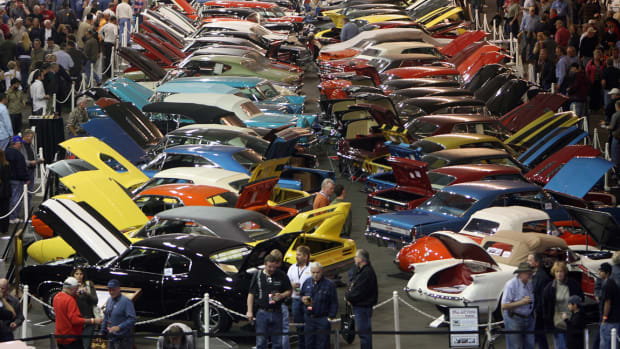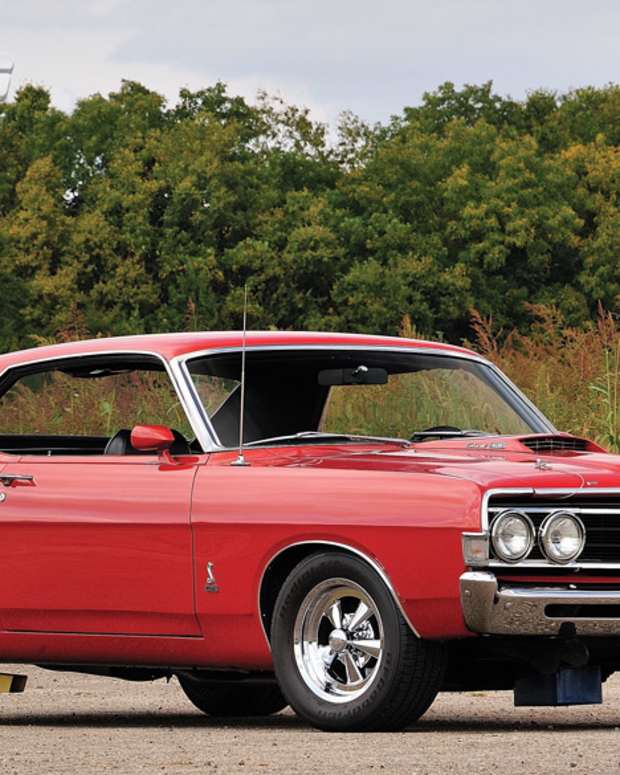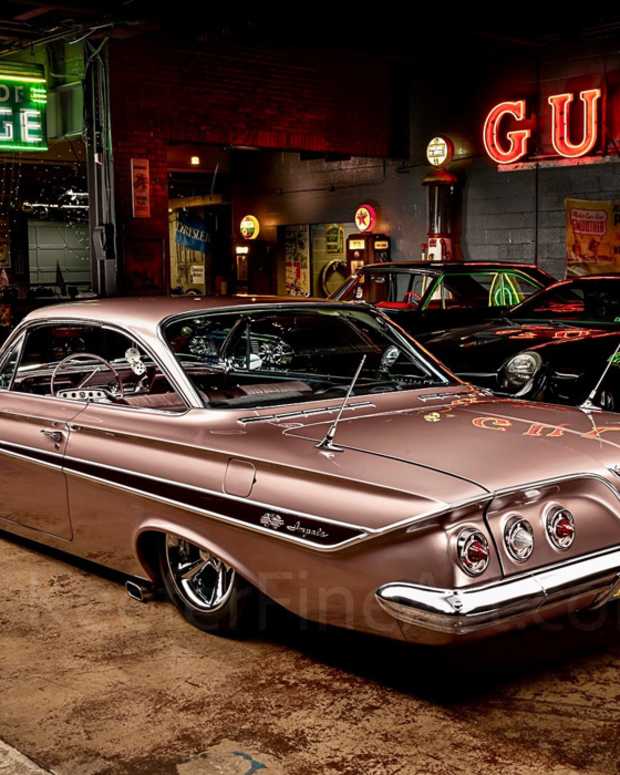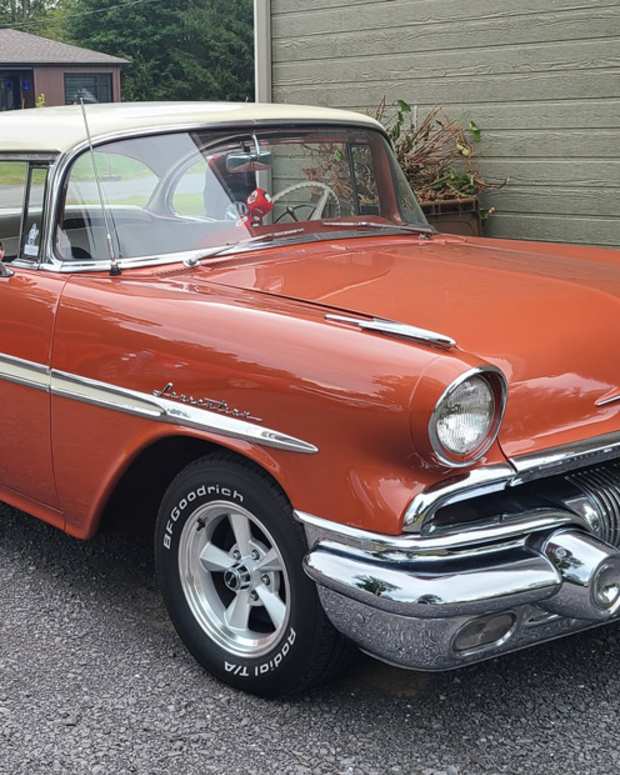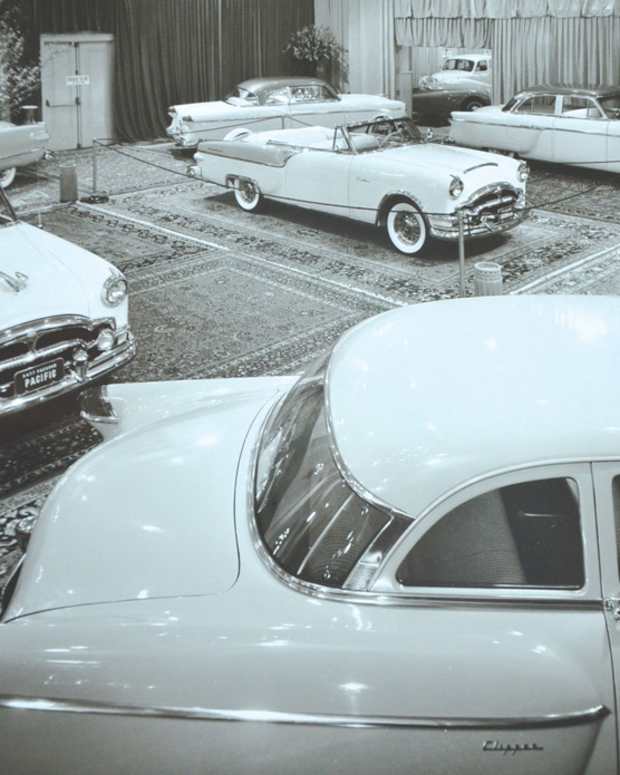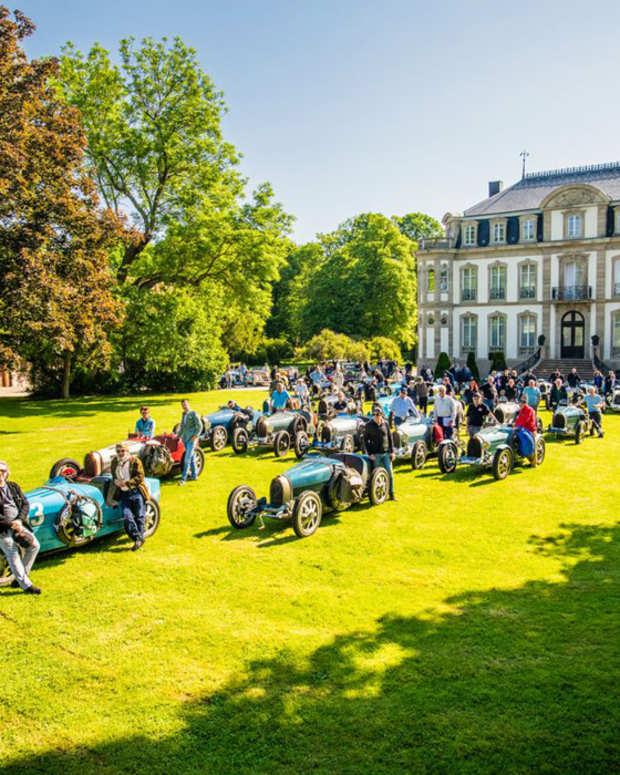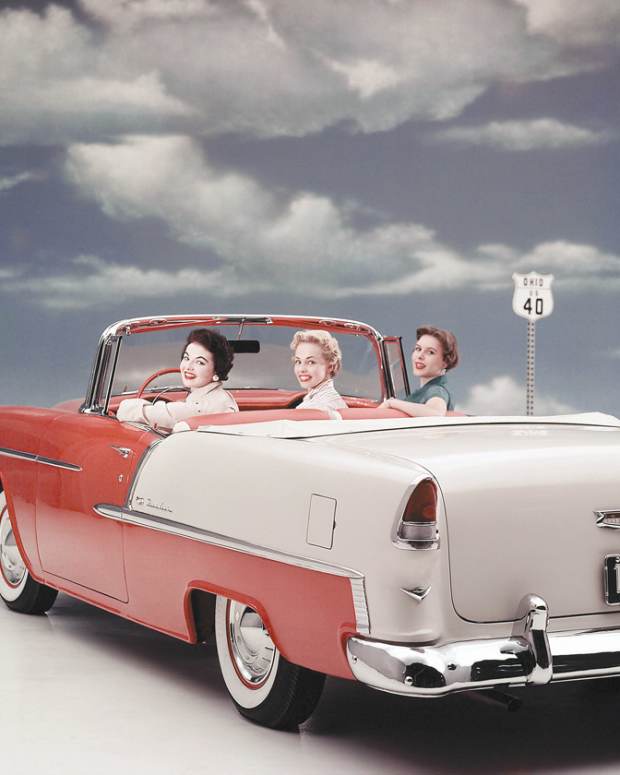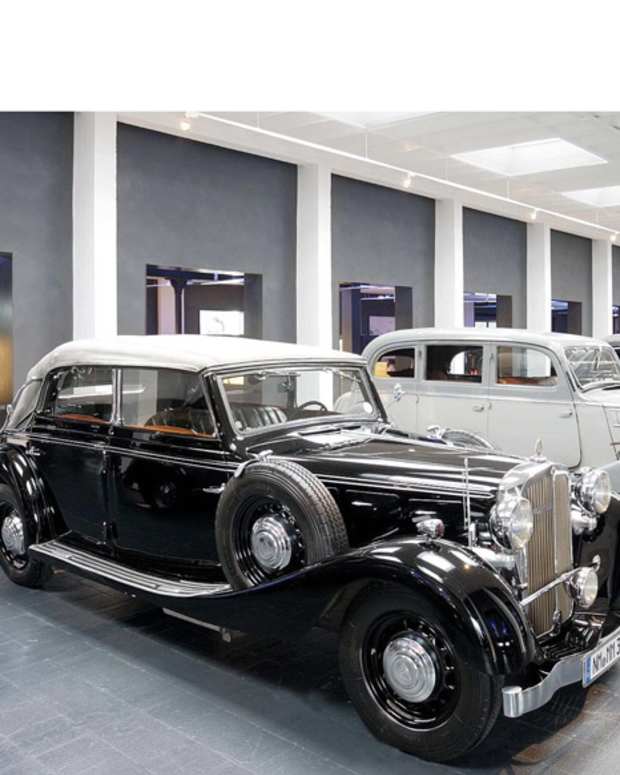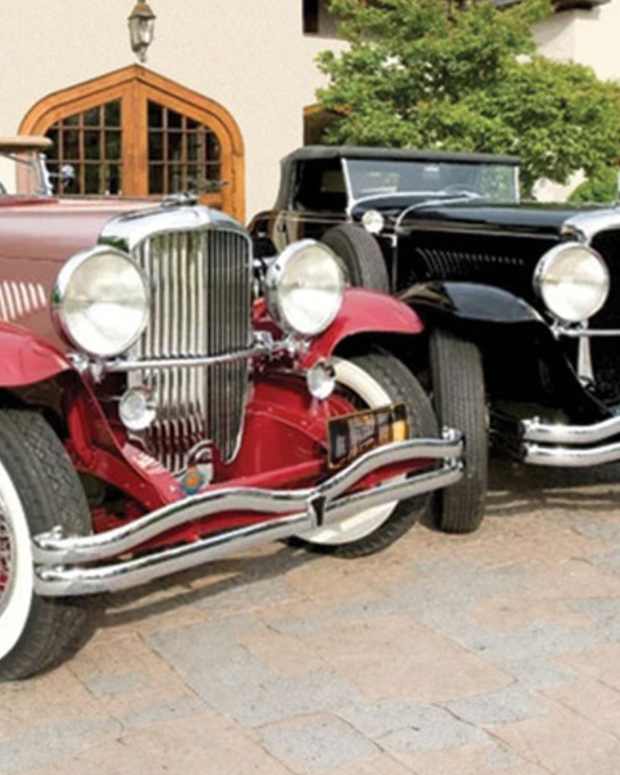LaSalle was ‘just right’ by design
The 1934 LaSalle, the car that was not supposed to be built!
Story by David Temple, photos courtesy of GM Media Archive

Even though the LaSalle was already cancelled by management, vice president in charge of styling, Harley Earl, ordered his team of designers to develop a new LaSalle for 1934. Upon selecting the design by Jules Agramonte, he ordered clay mockups to be fabricated. Seen here is the full-size clay mockup of a 1934 sedan being prepared. (GM Media Archive)
The LaSalle (also spelled “La Salle”) was born out of a critical predicament for General Motors. For years, Cadillac was at the front of the high-priced field in regard to production, but by about the mid 1920s, Packard had moved ahead of Cadillac. However, that was not all that was wrong at GM. In 1921, Alfred Sloan headed the Advisory Staff, a special committee created to evaluate the company’s product policies. What he found was troubling — only Buick and Cadillac were profitable! All lines had to be improved and new products offered as needed to compete in every price class. One of the first things done was to terminate divisions Scripps-Booth and Sheridan (acquired under Durant’s presidency), which contributed little, if anything, to GM’s bottom line.
As president of GM starting in 1923, Sloan continued improving GM’s product lines and addressing its cost issues, but he still had to solve the problem of being competitive in all price classes. In 1924, prices for the touring (the dominant body style at the time) were as follows: Chevrolet, $510; Oldsmobile, $750; Oakland, $945; Buick “4,” $965; Buick Six, $1,995; and Cadillac, $2,995. Price gaps had developed between the various car lines as well as between the Buick Six and Cadillac. Many of those able to move up from a Buick Six chose to purchase a Packard Six, which could be purchased for significantly less than a Cadillac.

The original design for the 1934 LaSalle (prior to the planned cancellation) was much like the 1933 version, but with a wide grille angled back, headlamps mounted on pylons atop the fenders and fenders flowing back into the running boards as in 1933. The biplane bumpers were carried forward for production, but in the end, very few styling elements from 1933 were kept. Shown here is an early 1934 prototype based upon the 1933 model. (GM Media Archive)
The solution for filling in these gaps within GM’s ladder began in 1926 with the new Pontiac, which was based upon the Chevrolet and sold by Oakland as a companion make. Other gaps were filled later, among them the Viking, companion to Oldsmobile, and the Marquette, companion to Buick. Both of these makes debuted for the 1929 model year, but they did not last long; each was terminated after the 1931 model year. Pontiac ultimately replaced Oakland, also at the end of the 1931 model year.
The LaSalle concept emerged in 1925 as the solution for filling the product gap existing between the upper-level Buick and Cadillac. Once the LaSalle came into existence, it was priced just above the Buick Six so as to add sales for GM and not take away from Cadillac. The model was more stylish and youthful than the reserved Cadillac; indeed, it was so different that there was very little parts interchange with a Cadillac.
The LaSalle became the first car to be designed at the direction of a stylist. That stylist was Harley Earl. In an article published in the winter 1967 issue of Automobile Quarterly, Harley Earl, who was interviewed for the story, recalled the beginnings of the LaSalle: “‘When you are a designer, you kind of think, ‘Well, if I were building one for myself from the chassis up, what would I do?’ The Hispano was a car I was deeply in love with, from stem to stern. I didn’t want to take too big a chance and do something that didn’t look like anything.
“So I went back and sketched some stuff for them and they asked me to stay and finish it. The models and sketches took about three months, from sketch to mock-up. Mr. Sloan brought in the heads of the departments and asked if they saw anything that would be a problem, like tearing dies... they made some little dies and stretched metals. They didn’t have any trouble….
“About a month later Mr. Sloan asked me to come back to New York to discuss a permanent job….”
The official introduction of the new LaSalle Series 303 occurred on March 5, 1927, the 269th anniversary of the birth of Antoine de la Mothe Cadillac. An advertising blitz commenced on March 3 with newspaper ads; the popular Saturday Evening Post featured a double-page ad in its issue that week, too. Among the selling points of the new car were its Cadillac engine (though not literally but rather of Cadillac design) and the “finest workmanship of Fisher Body craftsmen” as applied to all Cadillac models. The March issue of MoToR magazine also published a four-page article on the LaSalle. The author wrote that when he “first laid eyes on these new models lined up in a row stretching down one side of the exhibition room at the Cadillac factory his first impression was that here was just about the most beautiful line of cars he had ever seen.”
The LaSalle sold well up until the Great Depression. Higher-priced cars simply were no longer affordable for most people. Production of the 1929 models amounted to nearly 23,000 units while the figure for 1930 was down sharply to a bit under 15,000. By 1932, that total for 1930 looked glorious; only 3,386 LaSalles were built for 1932.

Designers of GM’s Art & Colour Section are shown at work on ideas for the 1934 LaSalle in this photograph. At center right is an instrument panel design. Note the scale clay model at top center. By this point, Harley Earl had pushed through his philosophy that every element of an automobile should be styled. (GM Media Archive)
A major restyle marked the 1933 LaSalle lineup, but production barely increased with a disappointing output of 3,482 units. With such poor sales, management decided to cancel production of the LaSalle at the end of the 1933 model year.
Even though the decision to cease production of the LaSalle had already been made, Harley Earl told his group of stylists to develop some fresh ideas for the 1934 LaSalle in hopes the model could be reinstated. Earl then left for his annual tour of the European auto shows. While he was away, Jules Agramonte, who had come over from Fleetwood, created an airbrush rendering comprised of features influenced by the narrow-fronted, fixed-front-wheel English beach racers of the day. These cars featured a tall, slender grille, a narrow and tapered hood, headlamps attached to the radiator shell and skirted front wheels. He showed it to one of his superiors, Harry Shaw, and suggested it could become the new LaSalle. Shaw disagreed and told him to file it away. However, Shaw went on a vacation immediately afterwards and Agramonte knew Mr. Earl would soon be returning from Europe. He also knew that Earl often came to the studios at night to look over the stylists’ work. Agramonte decided to leave his rendering of the proposed LaSalle lying on his desk in plain sight. As expected, Earl made his late-night visit and found the LaSalle rendering. According to Earl, it was one of the most exciting days of his life when he spotted the breathtaking design which could be the next LaSalle — if he had his way.
According to the book “La Salle – Cadillac’s Companion Car,” “It was perfect — slender and light, with the most beautiful fender forms anyone had ever seen. It was like a modern racing plane. This car had no vestige with the old traditional ‘carriage trade’ vehicles… Just like the original 1927 LaSalle, it was the right new car design for the times, but this time it was an original design and … totally American.”
Harley Earl ordered Agramonte to develop the design further and then to build clay models. After the LaSalle was refined and in clay form, a highly accurate sample body made from scrimmed wood and metal was constructed. All details were present including the biplane bumpers, chevrons on the leading portions of the front fenders and hood portholes. The next phase of the process — the executive review of each division’s new 1934 cars — would either revive the LaSalle or put an end to it permanently.

A LaSalle convertible coupe was chosen by Indianapolis 500 officials to be the pace car for the 1934 race. This was the second appearance for LaSalle as a pace car for the prestigious race; the first was 1927. The rakish design, the work of stylist Jules Agramonte, no doubt contributed to the Indy officials’ choice. Its eight-cylinder engine was certainly another factor. (GM Media Archive)
In August 1933, William Knudsen (GM president), Lawrence Fisher (Cadillac Division president), Earnest Seaholm (Cadillac chief engineer), John Chick (Cadillac general sales manager) and Nicholas Dreystadt (works manager) gathered in the auditorium of the Argonaut Building where Harley Earl presented each new model from the divisions of GM. He saved the LaSalle for last. Just before raising the curtain to reveal the LaSalle, Earl announced to the group, “This, gentlemen, is the LaSalle we will NOT be building.” (Another account claims Earl said, “Gentleman, if you decide to discontinue the LaSalle, this is the car you are not going to build.”) The group was greatly impressed with the car they “were not going to build,” and the LaSalle was reinstated.
Management’s reversal presented a problem. No one expected LaSalle to receive a stay of execution, so the production line was not ready for the car, let alone one so radically redesigned. The matter was solved by using the nearly idle Fleetwood plant. Sales of the Fleetwood-built V-12 and V-16 models had decreased greatly, leaving the skilled craftsmen with little work. It was only their skills that kept them from having already been laid off. Thus, for the duration of the 1934 model year, all LaSalles, which were designated as Series 350, wore the prestigious Fleetwood badge.
The design was beautiful, but it challenged the technology of the day. Presses were not able to produce all of the complex shapes, so a lot of the body work had to be done by hand. Fortunately, the Fleetwood employees were highly skilled at such labor. Incidentally, this was the final year for the body to be built over wood framing.
The 1934 LaSalle was so different from its contemporaries (including other GM products) that other automakers — even European car companies and designers — looked to it for styling inspiration.
Agramonte’s design resulted in a streamlined shape with pontoon front fenders that flowed more downward ahead of the wheels, thus hiding the front chassis. The shape was influenced by racing aircraft which had their fixed landing gear streamlined with pontoon-shaped fairings. This time, though, the front fenders were truncated in back rather than sweeping into the running boards. Headlamps were mounted on the radiator shell. Especially notable was the tall, narrow grille and radiator shroud as well as the long, tapered hood. The result of this styling was a narrow engine compartment that did not allow the Cadillac V-8 to fit. The solution was an engine of a different configuration. Replacing the V-8 was a straight-eight displacing 240 cubic inches and producing 95 hp at 3700 rpm. To keep costs down, an entirely new engine was ruled out, so in the end a block based upon the Oldsmobile straight-eight was used. By the time it was machined and fully assembled by Cadillac workmen, it had little in common with an Olds engine. The straight-eight and the 119-inch wheelbase of the LaSalle were traits in common with the Oldsmobile. Because of these similarities, the myth that the LaSalle used an Oldsmobile Eight chassis began, and even today the completely inaccurate claim is made that the 1934 LaSalle was built by Oldsmobile and that LaSalle had more in common with Oldsmobile than Buick.
In keeping with the streamlined theme, the spare tire was now concealed either in the luggage compartment of the four-door models or in a compartment beneath the rumble seat of two-door models. Fender-mounted spares were still offered to satisfy customer demand. However, their use was discouraged and they were a steep $35 option. Two-tone paint was not particularly encouraged, either, though black fenders with a contrasting body color was available at no extra charge. Nine standard color choices were offered for U.S.-built cars, though Canadian cars had far more color choices with 25 available. As in the past, any durable color could be specified by the customer at no extra charge. An opalescent finish could be had at extra cost.
Further enhancing the streamlined appearance of the LaSalle was the mid-year availability of a set of rear wheel shields (fender skirts) as an option costing $25. They were ornamented with a hubcap at the center. However, the fender shields had been fitted to a number of special-order cars and the convertible displayed at the World’s Fair before being officially offered.
Body styles of the LaSalle Series 350 were limited to four: a five-passenger sedan, two-passenger convertible coupe, two-passenger coupe and five-passenger club sedan with a blind quarter.
New mechanical updates other than the engine included hydraulic brakes (two years ahead of Cadillac), knee-action independent coil spring suspension, torsional rear stabilizer bar to mitigate side sway and the mid-year introduction of Hotchkiss drive (replacing the torque-tube) along with improvements to the transmission.
Prices decreased significantly from those of 1933. The lowest was $1,595 (two-passenger coupe) and all other models were priced at $1,695.
Despite its spectacular styling, lower prices and the extra publicity from being chosen as the pace car for that year’s Indy 500, 1934 LaSalle production amounted to only 7,232 cars, even though the 1934 body was supplied into March of 1935. Even so, the 1934 LaSalle spared the make from cancellation until the last of the 1940 models were completed.
Author’s Note: This story was compiled from information in my book, “The Cars of Harley Earl.” The book “LaSalle – Cadillac’s Companion Car,” by Ron Van Gelderen and Matt Larson, was also invaluable in writing this article.


